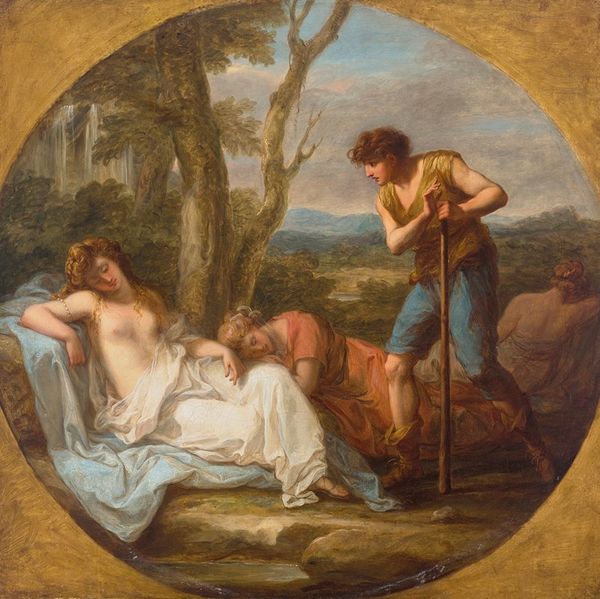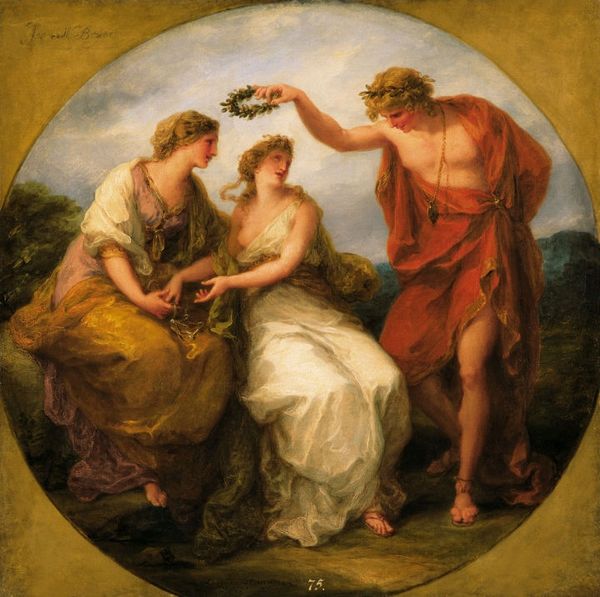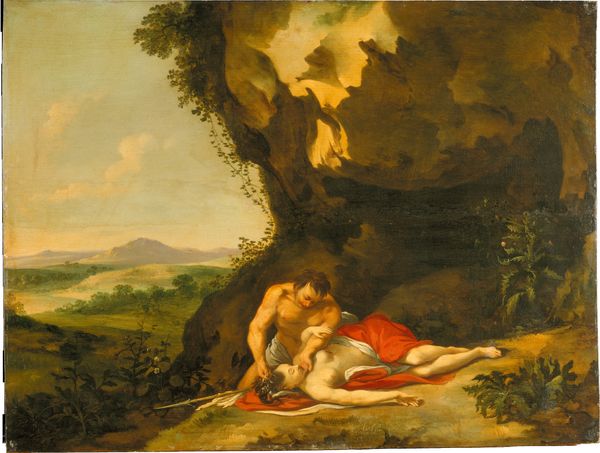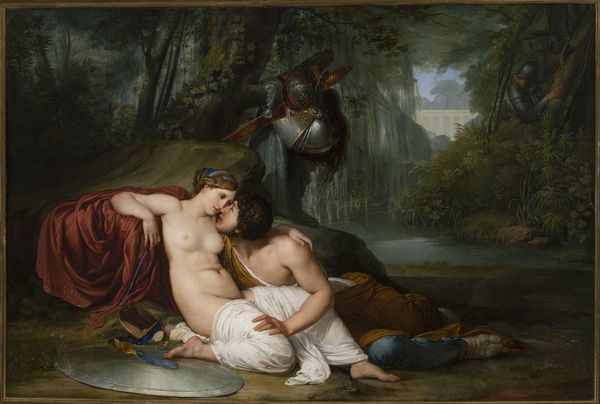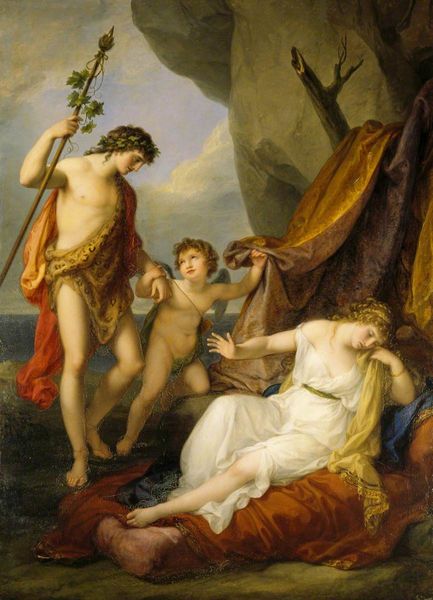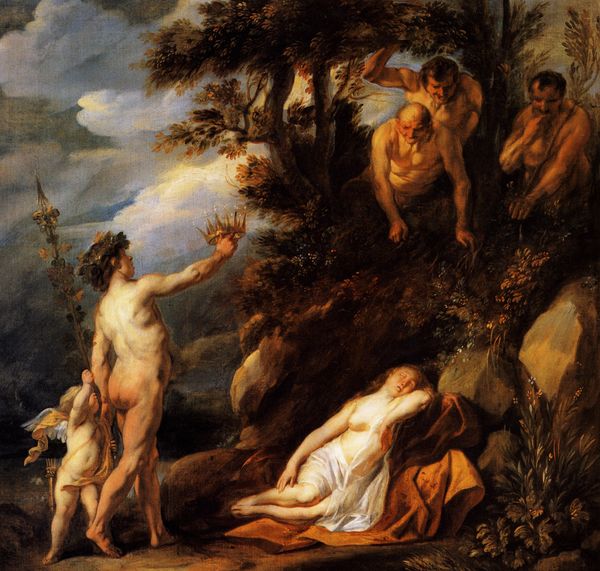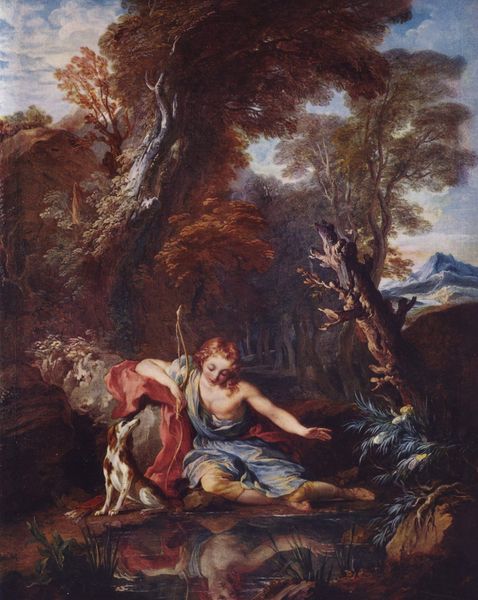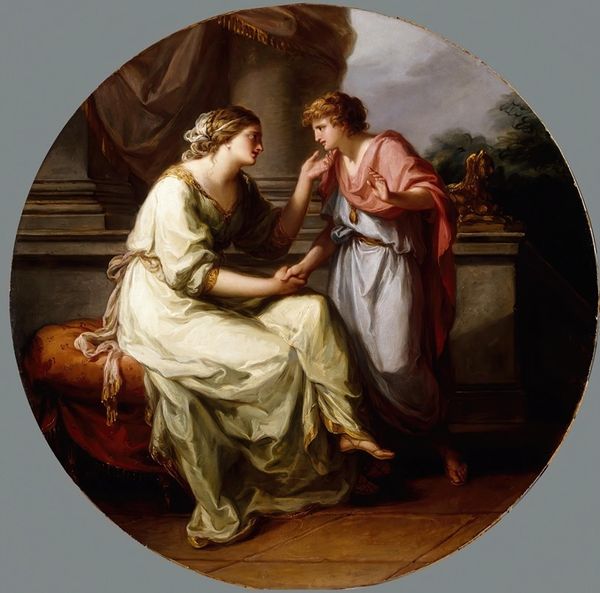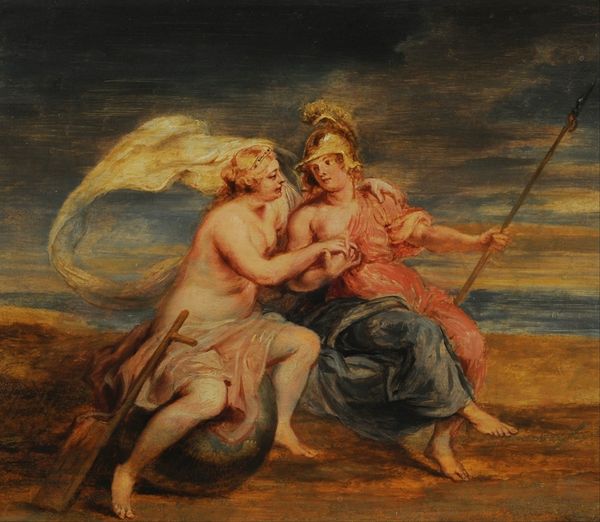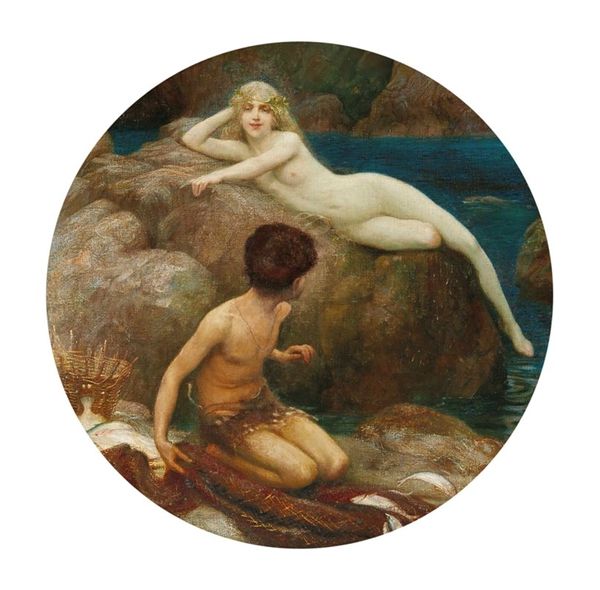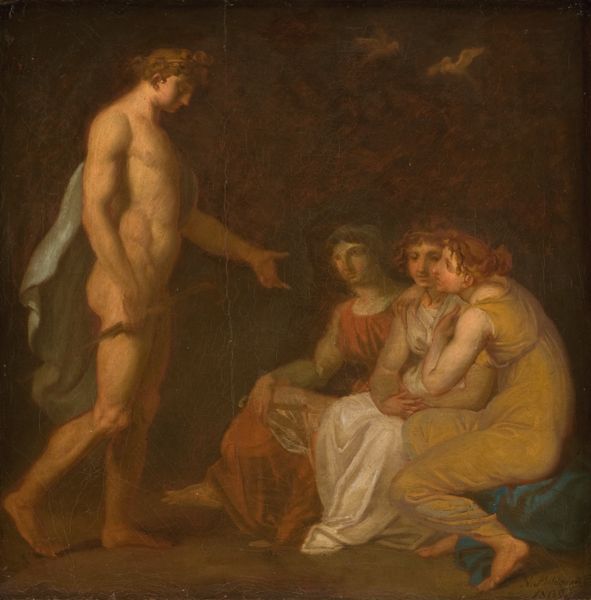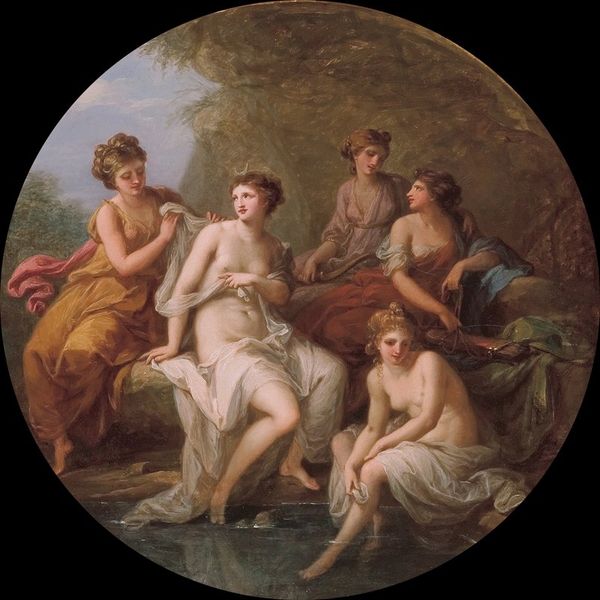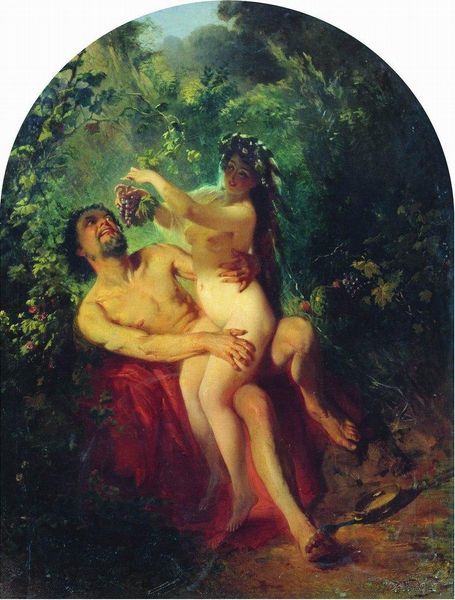
Copyright: Public Domain: Artvee
Editor: This is Angelica Kauffmann’s "Cymon and Iphigenia," painted around 1780 using oil paints. There's a real stillness to it, a very tranquil mood. What stands out to you when you look at this piece? Curator: Immediately, I'm drawn to consider the socio-economic factors embedded in its production. Kauffman, a successful woman artist in a patriarchal society, had access to specific materials and patronage. Think about the pigments used - where did they originate? How were they processed, and who did the labor? Ultramarine, for instance, would signal a particular kind of wealth. And what about the canvas itself? It’s a commercially available object. Considering these raw materials can ground our understanding beyond the mythological narrative. Editor: So you're less interested in the story of Cymon and Iphigenia itself and more the… things it's made of? Curator: Not necessarily *less* interested, but understanding the material conditions allows us to deconstruct some of the mythology around artistic genius. Who benefited from this painting, not just aesthetically, but materially? Was it commissioned? How would that affect the kind of narrative it portrays? These are all things to be pondered. What purpose does it serve beyond decoration? Editor: That’s interesting. I hadn’t thought about the paint itself having a story to tell, beyond just creating the image. Curator: Exactly! It makes us question whose stories are prioritized, and who's labor is invisibilized in art historical narratives. Editor: That gives me a lot to consider when looking at paintings now. It opens a different window to the work, almost a critical one. Curator: Absolutely, recognizing these underlying aspects can alter our perspective significantly.
Comments
No comments
Be the first to comment and join the conversation on the ultimate creative platform.
